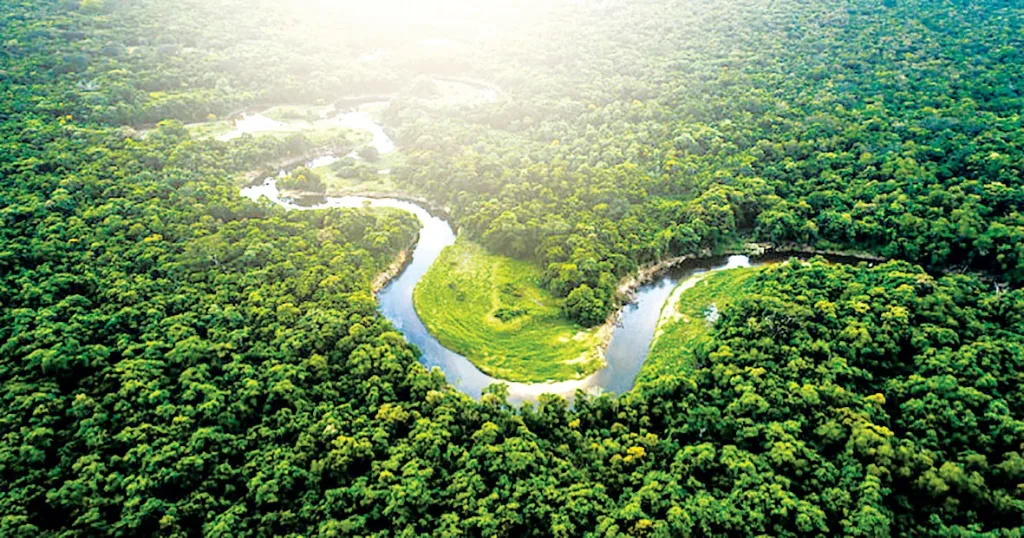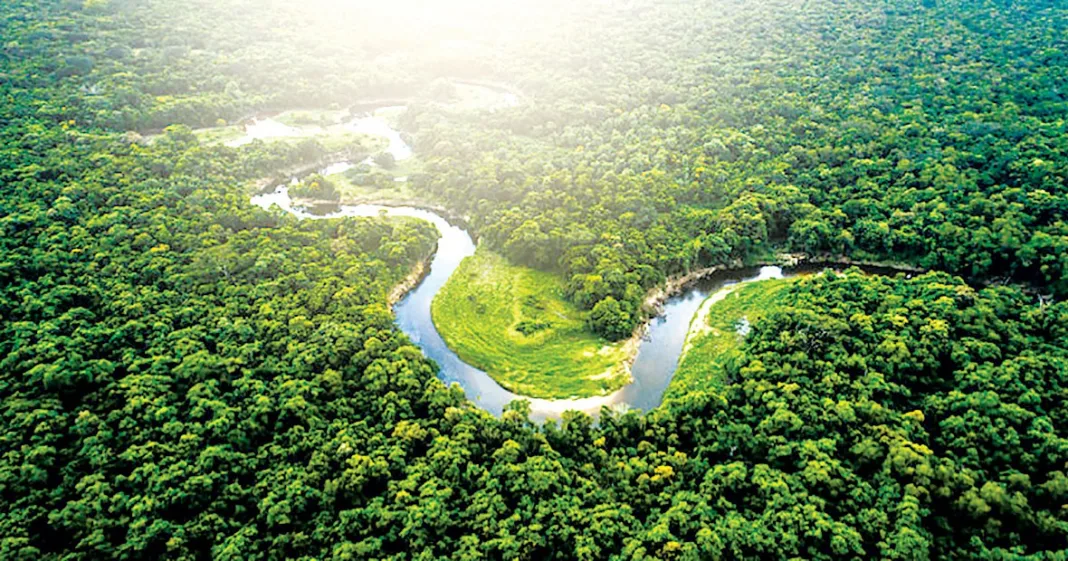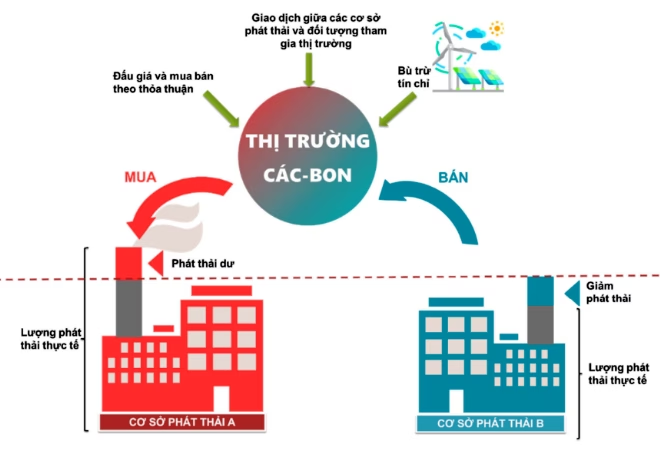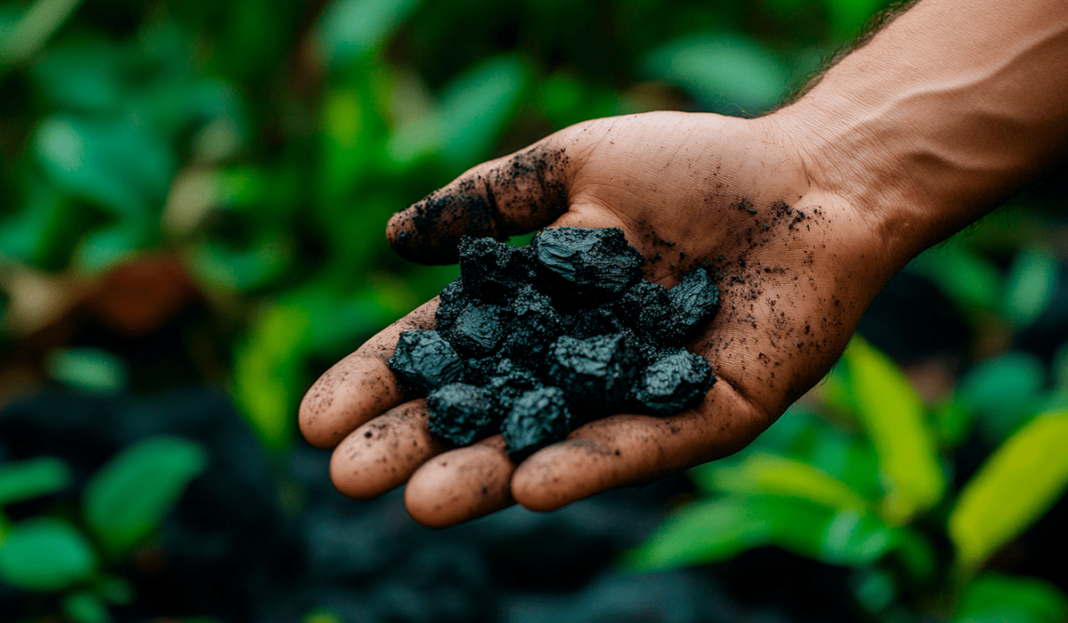After the COP21 conference, Vietnam’s Prime Minister assigned the Ministry of Agriculture and Rural Development (MARD) and other relevant agencies to implement tasks to meet national commitments. Under the new agreement, 100% of carbon credits will contribute to Vietnam’s Nationally Determined Contributions (NDC). Vietnam aims to generate 25 million carbon credits from 2021 to 2025.

Forests play a vital role in human life and the environment. They provide timber and fuel, produce oxygen, regulate water flow, and serve as habitats for wildlife and rare genetic resources. Forests also mitigate storms, prevent soil erosion, and ensure environmental protection, safeguarding both ecosystems and public health. Economically, forests contribute resources for construction, forestry, paper production, and create jobs, fostering livelihoods and economic wealth.
Moving Toward Sustainable Development
Vietnam is focusing on forest development to reduce greenhouse gas emissions, protect the environment, and ensure livelihoods while promoting sustainable forestry-based economic growth. Forest carbon credits, derived from greenhouse gas emission reduction projects such as forest preservation, afforestation, and improved forest management, are gaining attention in Vietnam’s forestry sector. Forest owners can quantify their forest areas in terms of CO2 absorption, convert this into carbon credits, and trade these credits on carbon markets through emission reduction mechanisms.
Developing a forest carbon market aligns with Vietnam’s goals of planting one billion trees by 2025 and achieving net-zero emissions by 2050. It also encourages communities to move away from destructive practices and actively participate in forest ecosystem preservation, ensuring sustainable economic growth.
Progress and Opportunities
According to Mr. Tran Hieu Minh, Head of Science, Technology, and International Cooperation at the Forestry Department of MARD, Vietnam secured $51.5 million from the World Bank (WB) after transferring 10.3 million carbon credits by March 2024.
“Both international and domestic partners have expressed interest in carbon credit trading. Delays in capitalizing on these opportunities could devalue carbon credits, reducing their transaction prices,” Mr. Minh explained. MARD is consulting with ministries and reporting to the Prime Minister to expedite related activities and maximize these opportunities.
Mr. Vu Tan Phuong, Director of the Office for Sustainable Forest Management Certification, noted that the global carbon market is rapidly expanding and becoming one of the most dynamic trading sectors. Carbon credit prices vary widely, from as low as $1–2 to nearly $200 per credit.
Countries like South Korea, China, and Australia have developed national standards for carbon credits. Their businesses not only meet mandatory reduction obligations but also adopt voluntary mechanisms in production and trade, ensuring transparency under international scrutiny.
In Vietnam, MARD is hastening efforts to establish national standards for forest carbon credits, aiming to create a comprehensive legal framework that attracts investment and facilitates an efficient domestic carbon credit market.
Establishing Transaction Mechanisms
Former Deputy Minister of MARD, Ha Cong Tuan, emphasized the need to understand that current forest carbon credit trading involves both international cooperation and voluntary transactions rather than a mandatory market.
Vietnam does not yet have an official operational mechanism for its carbon market. According to Decree 06/2022/ND-CP on greenhouse gas emission reduction and ozone layer protection, a carbon credit market is expected to be established by 2028.
“Until then, we should allow pilot implementations and international carbon credit sales,” Mr. Tuan suggested.
Challenges and Future Directions
Dr. Nguyen Dinh Tho, Director of the Institute for Environmental Strategy and Policy (Ministry of Natural Resources and Environment), acknowledged Vietnam’s successes in mobilizing financial resources for emission reductions, particularly in agriculture. Over nearly a decade of preparation, Vietnam’s carbon credit sales have already generated $51.5 million. The country is now preparing larger projects, such as a one-million-hectare rice project linked to carbon credits.
However, Dr. Tho noted that the government remains cautious about carbon credit trading. “In international workshops, we’ve discussed linking voluntary and compliance markets,” he said.
Compliance markets are established through commitments under the United Nations Framework Convention on Climate Change (UNFCCC), whereas voluntary markets facilitate non-mandatory carbon credit trading among organizations, companies, or countries. Early adopters like South Korea have successfully linked these two markets, while Vietnam is still proceeding cautiously.
Dr. Tho explained that voluntary market carbon credits often have lower prices. Connecting the compliance and voluntary markets is essential to increasing the value of Vietnam’s carbon credits. Higher credit values in compliance markets could incentivize farmers, boost incomes, and promote sustainable agriculture.
Developing carbon credit projects typically takes 12–18 months for foundational activities, three years for inventories, and an additional 3–5 years to complete transactions. Any delays could hinder Vietnam’s ability to connect its markets effectively.
“This is a significant challenge. Relevant ministries need to collaborate swiftly to implement this. At present, we are overly cautious. MARD must act quickly to seize global opportunities,” Dr. Tho urged.
Refining carbon credit standards and establishing mechanisms for trading are critical for Vietnam to capitalize on its forest resources and stay competitive in the global market. With timely actions and comprehensive policies, Vietnam can ensure its carbon credit market contributes significantly to sustainable development and environmental preservation.
Source: BaoChinhphu.vn







